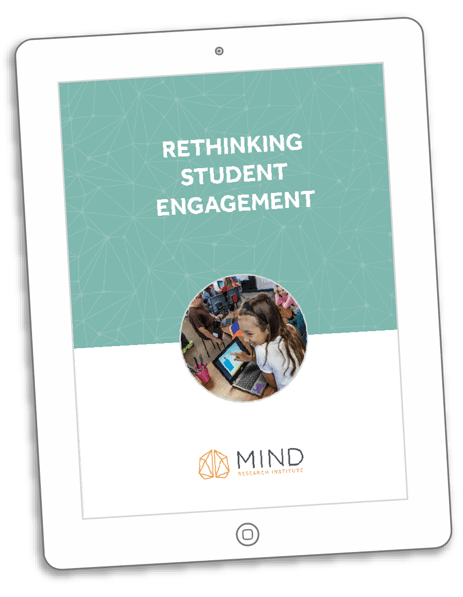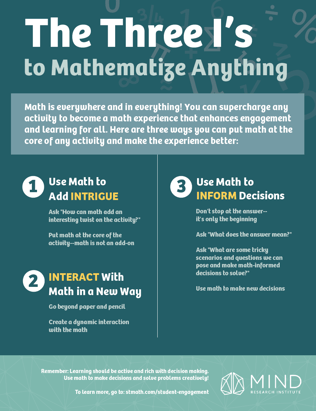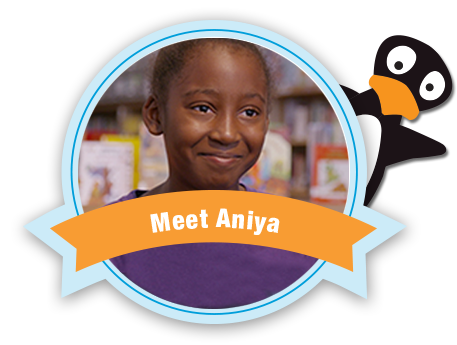Programs
Experience
Services
Educator Topics
Subscribe to the Newsletter
Subscribe to the Blog
Student engagement is often considered one of the "holy grails" of education, yet it is also a widely-defined and often misunderstood term. At its most literal, engagement simply means being occupied or involved in an activity. In conversations about student engagement, a common theme is that we don’t just want kids to be occupied, we also want them to be excited.
But that’s not enough.
Meaningful student engagement is tied to sustained effort, intentional thinking, and active learning.
When it comes to student engagement, the focus very often gets put on bringing students to the learning—getting them excited about a topic, a lesson or an activity. But when the method used to engage students is only superficial, that excitement can fade very quickly, and the deeper learning never happens. Students have to be motivated through the learning for active engagement, and that motivation must be intrinsic.
In this episode of the Inside Our MIND podcast, Director of ST Math Content Ki Karou talks about game design, and what student engagement looks like when it's truly meaningful. Ki also shares some of his experience from this year’s Game Developers Conference.
You can listen to the episode in the player below, and you can find show notes from the episode here.
Learn how to move your students beyond superficial engagement to being dynamically active in their learning.
This ebook by MIND’s Lead Mathematician Brandon Smith examines the wash, rinse, repeat cycle that many student engagement efforts get stuck in. He proposes a new schema in which the focus goes beyond engaging students to a concept, but motivates them through learning while challenging them at a deep level. This dynamically active lens can be used when creating math experiences or evaluating existing ones.

Learn how to move beyond superficial engagement with your students to more dynamically active engagement.
This ebook by MIND’s Lead Mathematician Brandon Smith examines the wash, rinse, repeat cycle that many student engagement efforts get stuck in. He proposes a new schema in which the focus goes beyond engaging students to a concept, but motivates them through learning while challenging them at a deep level. This dynamically active lens can be used when creating math experiences or evaluating existing ones.

Two of the biggest challenges to student engagement with math are math anxiety and boredom. Many students are either afraid of math, or outright apathetic about it.
Math anxiety affects a student’s ability to concentrate, to remember information, and make calculations, negatively affecting learning and performance. Research has shown that parents and teachers who have math anxiety can negatively impact student performance as well.
The way math has traditionally been taught is very one-dimensional--worksheets, pencil and paper calculations, and a focus on getting the answer to an equation. This is akin to experiencing music only as symbols on lined paper but never actually hearing it.
To reduce math anxiety and get students engaged, we need to change their relationship with math.
Getting students to express their feelings can not only help reduce math anxiety, but it can impact their social-emotional well-being overall. Providing math experiences where motivation is intrinsic (as opposed to a reward for task completion) keeps learning exciting. Math experiences that are rich with decision making motivate students through the learning. And when students set goals for themselves, they are motivated to learn.
Use Math to Add INTRIGUE
-Ask "How can math add an interesting twist on the activity?"
-Put math at the core of the activity--math is not an add-on
INTERACT With Math in a New Way
-Go beyond paper and pencil
-Create an experience through which students dynamically interact with math
Use Math to INFORM Decisions
-Don't start and stop the math at the calculation
-Allow math to be a tool for the decisions you are naturally making in the experience
Remember: Learning should be active and rich with decision making. Use math to make decisions and solve new problems creatively!

Use Math to Add INTRIGUE
-Ask "How can math add an interesting twist on the activity?"
-Put math at the core of the activity--math is not an add-on
INTERACT With Math in a New Way
-Go beyond paper and pencil
-Create an experience through which students dynamically interact with math
Use Math to INFORM Decisions
-Don't start and stop the math at the calculation
-Allow math to be a tool for the decisions you are naturally making in the experience
Remember: Learning should be active and rich with decision making. Use math to make decisions and solve new problems creatively!

For more on the "Three I's," listen to our podcast episode on mathematizing!
The visual instructional approach of ST Math builds a deep conceptual understanding of math through rigorous learning and creative problem solving. Through tantalizingly tricky puzzles, students are actively engaged, motivated and challenged toward higher achievement. Over the course of a school year, students solve well over 5,000 interactive puzzles, each one providing animated feedback that adapts to a student’s response. This informative feedback offers an intrinsically motivating learning experience that shows students the mathematical consequences of each answer. We perceive the world, perform actions, perceive the results, and adjust our actions in response...all in a cycle that repeats again and again. This forms the basis of our brain’s ability to learn, think and solve problems.
Pickerington Local School District students are actively engaged in mathematical learning with ST Math.
The experience of solving tantalizingly tricky puzzles provides intrinsic motivation for students. In doing so, students develop a conditioned response that drives them to take on the next challenge with energy and enthusiasm.
"They're engaged not just because it's a game and it's fun and it's JiJi the penguin. They're engaged because they finally believe that they can do math."
--Whitney Robinson, Vice Principal, Harmon Middle School, Pickerington, OH

"What I like about ST Math is that you can learn new ways to do things and you can also have fun at the same time. It’s important to learn math because when you grow up, math is going to be all around you. Math is really important in the world."
Examples and insights from education leaders who’ve implemented personalized learning with successful student learning outcomes.
Read more about how personalized learning changed Live Oak »
Read more about Pickerington’s personalized learning model »
ST Math is a visual instructional program that builds a deep conceptual understanding of math through rigorous learning and creative problem solving to engage, motivate and challenge PreK-8 students toward higher achievement.
In ST Math, over 200 visual games create a unique pathway of interconnected content challenges to provide differentiated instruction for individual students, regardless of skill level.
Students take their own path to mastery. In order to move to new levels, they must demonstrate mastery at each stage of the objective. To ensure all students develop deep mathematical understanding, the program personalizes their exposure to each concept according to their unique needs. As a result, students are empowered to work through any obstacle as they make their own pathway to mastery.
“Our end-all, be-all goal is individualized, personalized, differentiated instruction. ST Math allows students to work at their own pace. It allows student to fill in some of those gaps that may have been missed in previous courses.”
“Taking teaching to the next level is really all about individualizing learning for all students. One way that we do that here at Marlboro Township is purposeful use of our digital tools. And ST Math is one of our digital tools that fills an important gap, which other digital tools do not.”